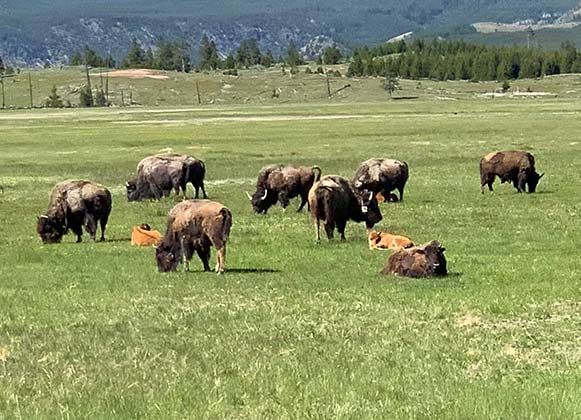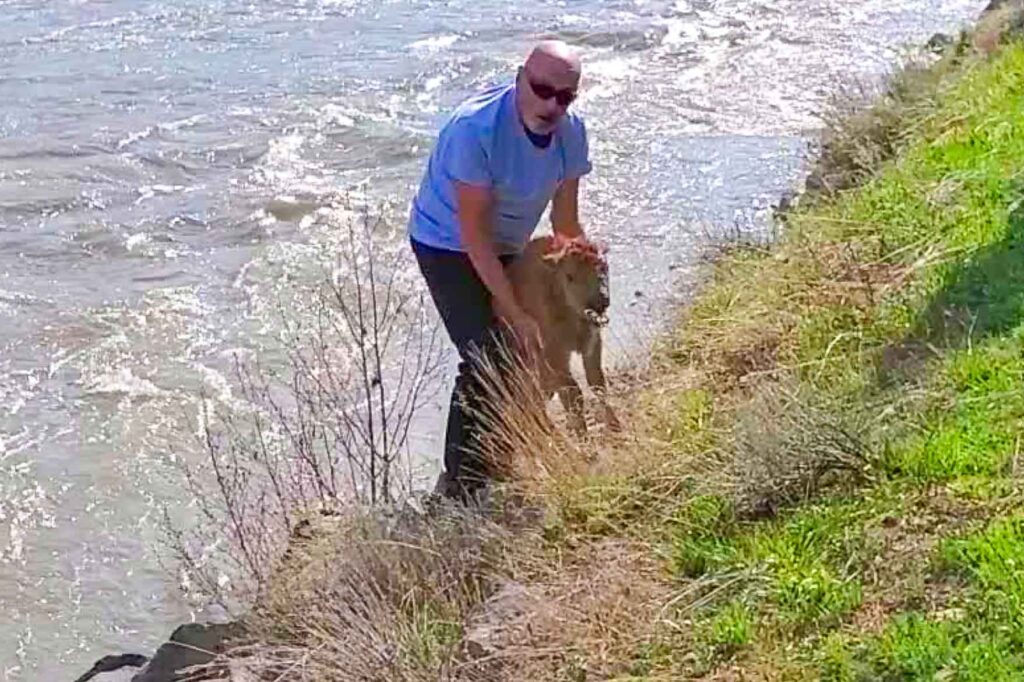- Grand Teton National Park is investigating an incident where tourists actually touched a bison calf, and they actively seeking those responsible.
- Interfering with wildlife can have severe consequences and may result in animals being euthanized or abandoning their offspring.
- Approaching wildlife, touching them, or attempting to interact is strictly prohibited in the park.
Grand Teton National Park is currently conducting an investigation into an unfortunate incident that occurred on Sunday, June 4, involving two individuals who approached and touched a bison calf at the southern end of Elk Ranch Flats. The park authorities are actively seeking any information related to this incident and urging anyone present in the area on that afternoon to come forward. The park’s policies regarding wildlife-human interaction are crucial in ensuring the well-being and conservation of the park’s diverse wildlife.
National Park has Policies on Approaching Bison
Interfering with wildlife can have severe consequences, both for the animals and for visitors. In this specific incident, the calf was fortunately reunited with its herd. However, encounters like these often result in the animal being euthanized due to the negative impact of human interference. Grand Teton National Park emphasizes the importance of respecting wildlife and maintaining a safe distance to preserve the natural behaviors and habitats of these magnificent creatures.
Approaching wildlife, touching them, or attempting to interact in any way is strictly prohibited within the park’s boundaries. Such actions not only pose a danger to visitors but also disrupt the natural order and delicate balance of the ecosystem. Animals can become stressed, aggressive, or abandon their offspring, leading to detrimental consequences for their survival.

Guidelines for Viewing Bison and Other Wildlife
To ensure the safety of both visitors and wildlife, Grand Teton National Park urges everyone to adhere to the following guidelines:
1. Maintain a Safe Distance: It is essential to stay at least 25 yards away from most wildlife, such as bison, elk, and deer. For larger animals like bears and wolves, the minimum recommended distance increases to 100 yards.
2. Use Binoculars or Zoom Lenses: Enjoy the beauty and grandeur of wildlife from a distance using binoculars or camera zoom lenses. This allows for a close-up view without intruding upon their natural behavior.
3. Respect No-Entry Zones: Certain areas within the park are designated as wildlife management zones, where access is restricted to protect vulnerable species. These zones are clearly marked, and visitors should adhere to the restrictions.
4. Report Wildlife Harassment: If you witness any wildlife harassment or encounter individuals who are interfering with animals, please report it immediately. You can contact the Teton Interagency Dispatch Center at 307-739-3301 or reach out to the park’s Tip Line at 307-739-3367.

Committed to Protection of Bison
Grand Teton National Park remains committed to the preservation and conservation of its bison and other wildlife, while also ensuring the safety and enjoyment of park visitors. By following these policies and guidelines, we can contribute to the protection of these remarkable animals and maintain the integrity of this unique natural environment.
*Note: Grand Teton National Park would like to express its gratitude to the public for their cooperation and assistance in reporting any incidents or violations of wildlife-human interaction policies.*
For more information and updates, please visit the Grand Teton National Park website at www.nps.gov/grte.
- Problem Grizzly Put Down in Big Sky - August 11, 2023
- Yellowstone Revealed Explores Indigenous history - August 9, 2023
- Wyoming Baseball Team to the American Legion World Series - August 9, 2023
